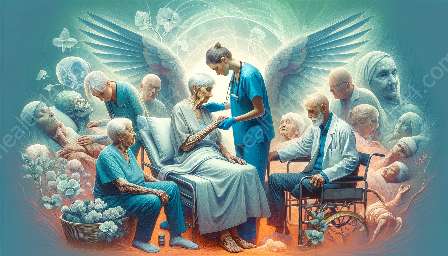As individuals age, maintaining physical activity and exercise becomes increasingly important for their overall well-being. This topic cluster delves into the significance, benefits, challenges, and strategies of promoting physical activity and exercise among elderly patients, with a focus on geriatric nursing and geriatrics.
The Importance of Physical Activity and Exercise for Elderly Patients
Physical activity and exercise are crucial for the health and vitality of elderly patients. Engaging in regular physical activity can help them maintain their mobility, independence, and functional abilities. Additionally, exercise plays a significant role in preventing chronic diseases, managing existing health conditions, and enhancing the quality of life for elderly individuals.
Benefits of Physical Activity and Exercise for Elderly Patients
There is a wide array of benefits associated with promoting physical activity and exercise for elderly patients. These include improved cardiovascular health, better muscle strength and flexibility, reduced risk of falls and fractures, enhanced mental well-being, and overall improved physical function. Moreover, physical activity and exercise can positively impact cognitive function, mood, and sleep patterns in elderly patients.
Challenges in Promoting Physical Activity and Exercise for Elderly Patients
While the benefits of physical activity and exercise for elderly patients are evident, there are various challenges that healthcare professionals face in promoting and implementing these activities. These challenges may include mobility limitations, existing health conditions, fear of injury, lack of motivation, and the need for specialized exercise programs tailored to the unique needs of elderly patients.
Strategies for Promoting Physical Activity and Exercise in Geriatric Nursing
Geriatric nursing plays a vital role in promoting physical activity and exercise among elderly patients. Healthcare professionals in this field can implement various strategies to encourage and support elderly individuals in engaging in regular physical activity. These strategies may include personalized exercise plans, educational initiatives on the benefits of physical activity, creating a supportive environment, and involving family members in the exercise routines of elderly patients.
Geriatrics: Tailoring Physical Activity and Exercise for Elderly Patients
The field of geriatrics focuses on the healthcare of elderly patients, including the promotion of physical activity and exercise. Geriatricians and healthcare providers specializing in geriatrics utilize tailored approaches to address the unique needs and challenges faced by elderly individuals. These approaches may involve comprehensive assessments, individualized exercise prescriptions, and interdisciplinary collaboration to promote physical activity and exercise as an integral part of elderly patient care.
Conclusion
Effective promotion of physical activity and exercise for elderly patients is a fundamental aspect of geriatric nursing and geriatric care. By understanding the importance, benefits, challenges, and tailored strategies, healthcare professionals can significantly contribute to enhancing the well-being and quality of life of elderly individuals through regular physical activity and exercise.


